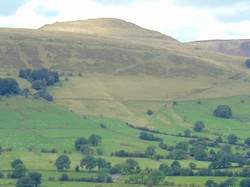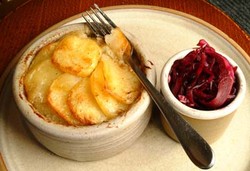During the sixteenth and seventeenth century some parts of Lancashire were obsessed with witches and witchcraft. Any misfortune that befell anybody at all was believed to be because of witches' curses.
Sick cattle, sick people, any misfortune was attributed to witches and usually some unpopular, poor or unpleasant person was charged.
I have written to Members of the British Parliament over the years asking for the sentences of these women and men to be overturned but to no avail. Most were women and were poor so governments are uninterested.
The main trials of Lancashire witches were in 1612. King James 1st, James Stuart, son of Mary Queen of Scots, had been king for 9 years. Shakespeare had played on King James fears when he wrote the witches scenes in MacBeth.
These witch trials were generations before the notorious witch trials in Salem, America . Many of the Salem verdicts and executions were overturned within twenty years. The Lancashire witch trial verdicts have never been overturned.








 Blarney Castle and Gardens, County Corkon 06/01/2023
Blarney Castle and Gardens, County Corkon 06/01/2023
 An Cóbh, Corcaigh, Eireon 05/29/2023
An Cóbh, Corcaigh, Eireon 05/29/2023
 Dublin ; The Book of Kellson 04/04/2023
Dublin ; The Book of Kellson 04/04/2023
 The Bee Tree Community CIC;- an online support communityon 08/24/2022
The Bee Tree Community CIC;- an online support communityon 08/24/2022


Comments
North of England food
Shortcrust pastry infused with thyme.
The shortcrust pastry here in the UK would be ;
8 ounces of plain flour
3 ounces of shortening/ lard
1 ounce of butter
finely chopped fresh thyme
a small amount of water is added slowly to bind it together .
mix the Dry ingredients together, then slowly add very cold water to draw it together. Chill in the fridge before using the pastry.
This is a very nice pastry for savoury, not sweet, pies.
A suet pastry crust would be put on the top of a one-crust pie, usually meat.
It would be
8 ounces of flour
4 ounces of dried suet
water to bind it together.
Chill in the fridge before using the pastry.
A local library distributed seed packets, of which one is leeks, which I'm planting. So maybe down the road, if I like malkin pies, I may be using my very own home-grown leeks!
But before then, how would I make a "shortcrust base infused with thyme" and a "suet pastry crust on top"?
I just have a strong belief in justice and fairness. I don't think it is ever too late to undo an injustice.
Veronica, Thank you for your concern so many centuries after the tragedy. Are there any descendants in the direct or collateral lines? What would happen with successful overturning of the cruel sentences?
It is a pernicious myth that Henry turned England Protestant, for not only did he execute Protestants as well as Catholics, but there were serious pro-Catholic risings in the country. Henry was a schismatic Catholic. Protestantism got a grip during the reign of Henry's son,Edward the Sixth, who was manipulated by his guardians, the Seymour family, into enacting much stronger Protestant measures. But even then a Catholic tradition remained.
I don't think that the substitution theory is viable,for loss of children at birth was normal then in a time of high childhood mortality. It is noteworthy that her female side was shown in that she allowed certain favoured courtiers to fondle her breasts, but they were allowed to do nothing more,indicating that she was hiding something.
No, they needed a red headed child to substitute for the dead princess and only a male child was available. She wasn't born male as Henry would have been delighted and not had Anne Boleyn executed on false charges.
This needs a Wizzley article I think maybe.
Had she been male she would have had fewer problems, for Henry would have had the son that he wanted and so she would have been declared male. That she was female seems to be accepted, but as you say,she covered her Adam's apple, needed to shave and refused full relationships with males, indicates that sex as a woman was not possible for her . Her being intersex makes full sense. Such conditions do occur, so the question of her being intersex does arise. If a swap had happened,would it not have been easier to swap a female for a female rather than a male for a female? The question of her being intersex is therefore very relevant.
The story of Elizabeth 1st being a male child swapped in infancy for a deceased Princess Elizabeth Tudor has stayed for centuries. There are several reasons why this I likely to be so.
" She " was bald., wore high collars to protect her Adam's apple, shaved everyday , refused to marry man despite it being essential for her to have a child to secure the Tudor succession.
The question of intersex doesn't arise.
Henry the Eighth was a religious failure. Not many in England gave him genuine support, for he made his case by murder, which is always unconvincing, and Catholic sentiments have lingered long in the land, which is why the slowly decaying Church of England ebbs inexorably back to a more Catholic way. England is not truly Protestant country, but debased and betrayed Catholic one.